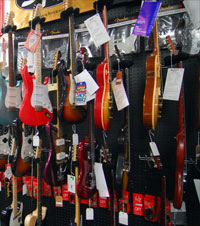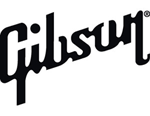The Electric Guitar

Electric guitars can have solid, semi-hollow, or hollow bodies, and produce little sound without amplification. Electromagnetic pickups convert the vibration of the steel strings into signals, which are fed to an amplifier through a cable or radio transmitter. The sound is frequently modified by other electronic devices or the natural distortion of valves (vacuum tubes) in the amplifier. There are two main types of magnetic pickups, single and double coil (or humbucker), each of which can be passive or active.
The electric guitar is used extensively in jazz, blues, R & B, and rock and roll. The first successful magnetic pickup for a guitar was invented by George Beauchamp, and incorporated into the 1931 Ro-Pat-In (later Rickenbacker) "Frying Pan" lap steel; other manufacturers, notably Gibson, soon began to install pickups in archtop models.
After World War II the completely solid-body electric was popularized by Gibson in collaboration with Les Paul, and independently by Leo Fender of Fender Music. The lower fretboard action (the height of the strings from the fingerboard), lighter (thinner) strings, and its electrical amplification lend the electric guitar to techniques less frequently used on acoustic guitars. These include tapping, extensive use of legato through pull-offs and hammer-ons (also known as slurs), pinch harmonics, volume swells, and use of a tremolo arm or effects pedals.


